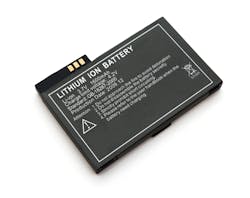PRBA issues statement on lithium-ion battery safety
WASHINGTON, 6 Feb. 2013. Frustrated by inaccurate reports, George Kerchner, executive director of PRBA—The Rechargeable Battery Association, differentiates between the safe air transport of lithium-ion (Li-ion) batteries and far larger Li-ion aircraft batteries providing power on Boeing 787 Dreamliner aircraft.
News stories that equate cargo shipments of lithium-ion batteries with those lithium-ion batteries used to power aircraft are fundamentally wrong and mislead the public.
Misinformation about lithium-ion batteries abounds. Allegations are often repeated without any understanding of the facts. That's why it is absolutely critical to understand the world of difference between the millions and millions of lithium-ion batteries and products containing them that are safely packaged and transported on aircraft every year and the much larger lithium-ion aircraft batteries that were actively being used as a power source onboard Boeing's Dreamliner during the recently reported incidents.The batteries on the Dreamliner actively charge and discharge on the aircraft. As investigators are learning, these batteries are part of an extremely complex aircraft electrical system involving wiring, chargers, monitors, and controlling units, to name just a few.
Lithium-ion batteries and the products containing them, as well as aircraft batteries, are not charged and discharged during transport and must be packaged, labeled, and shipped in accordance with robust international transportation regulations that became effective this year and are typically more stringent than previous U.S. Department of Transportation requirements.
We continue to await the results of complete investigations in Japan and the United States. It is clear these investigations will take more time than was originally envisioned. We caution against a rush to judgment about the general safety of lithium-ion batteries until all the facts are in and investigators can provide the answers to questions about the Dreamliner incidents.
According to an association spokesperson, PRBA members produce approximately 70 percent of the world's lithium-ion cells and account for billions of dollars in annual worldwide sales.
Battery image courtesy Shutterstock.

